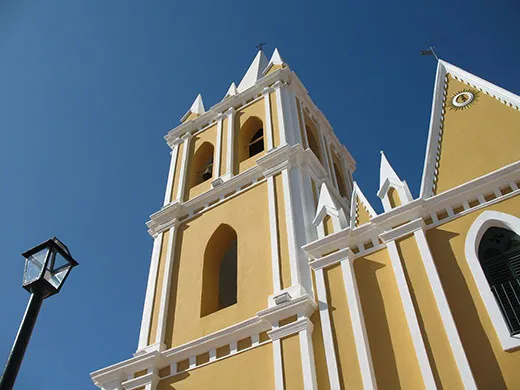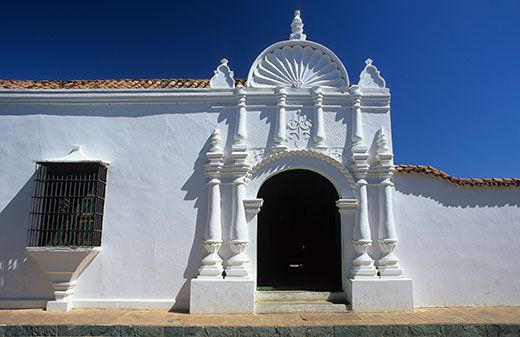Endangered Site: Port City of Coro, Venezuela
One of South America’s best preserved towns, this Spanish colonial port city now faces deteriorating conditions
/https://tf-cmsv2-smithsonianmag-media.s3.amazonaws.com/filer/Port-City-of-Coro-Venezuela-631.jpg)
A strong breeze blows along the southern coast of Venezuela's Paraguaná Peninsula, which is surely how Coro got its name, a derivation of the Caquetío Indian word curiana, meaning "place of winds." Today, the Caribbean port—arguably the first to call itself the "windy city"—is one of South America's oldest and best-preserved colonial towns, retaining much of its original layout and many of its early earthen structures.
Coro was founded by the Spanish in 1527 as the first capital of the Province of Venezuela. But just a year later, King Carlos I of Spain leased the province to the Welsers, a German banking house, to repay loans worth around 850,000 florins (6,600 pounds of gold), which he had borrowed to defeat the candidacy of Francis I of France to become the next Holy Roman Emperor. He succeeded, and was crowned Emperor Charles V by the pope in 1530. (Even then, campaigns for the top jobs were expensive.) Under German control, Coro became a base for explorers seeking El Dorado, South America's mythical city of gold. When the lease expired in 1546, Spain reclaimed the province and relocated the capital inland—away from pirates who preyed upon European colonies—125 miles to the south, in El Tocuyo. For the next century and a half, Coro was little more than a provincial outpost, vulnerable to both pirates and the unforgiving weather. Devastating raids in 1567, 1595 and 1659, as well as a cyclone in 1681, curbed the city's growth.
But, in the 18th century, a burgeoning trade in agricultural produce and livestock with the nearby Dutch islands of Curaçao and Bonaire, as well as several Spanish Caribbean islands, allowed Coro to blossom, and many of its 600 surviving historic structures date back to this era.
Coro is a "unique example of a well-conserved urban area with Spanish, Antillean, Dutch and indigenous architectural influences," says Venezuelan architect Maria Eugenia Bacci. And each building has a story to tell. The 16th-century Spanish-style Cathedral was Venezuela's first cathedral and the seat of South America's first bishopric. (The gun slits in its tower attest, also, to the Cathedral's role in defending the city.) The 18th-century Casa de las Ventanas de Hierro (House of the Iron Windows) is named for its wrought-iron window grilles, luxuries imported from Seville, Spain. The house has belonged to the same family—the Tellerías—for 230 years. The Balcón de Bolívar (Bolívar's Balcony), a rare two-story residence with elements of Antillean and Canary Island architectural styles, commemorates revolutionary leader Simon Bolívar's only visit to Coro, December 23, 1826, and his appearance on the balcony to greet supporters.
In 1993, the United Nations Educational, Scientific and Cultural Organization (UNESCO) designated Coro a World Heritage Site—then the only one in Venezuela. But by 2005, the city's deteriorating condition—caused, in part, by two consecutive years of heavy rains—prompted UNESCO to place Coro on its List of World Heritage in Danger. The organization issued a number of preservation recommendations, including a new drainage system and measures to control the growing traffic of tourists. "So far, nothing's been done," says Graziano Gasparini, a restoration architect and frequent visitor who originally nominated Coro as a World Heritage Site. "There was an allocation of $32 million on the part of the Venezuelan government to address Coro's problems, and no one knows where it went."
Coro remains on UNESCO's endangered list. The demise of this city, which has survived hurricanes and the predations of pirates, "would be a loss to everyone," says Bacci. "It's not just the patrimony of the country or of the region but of the world."
Planning Your Next Trip?
Explore great travel deals
Smithsonian magazine participates in affiliate link advertising programs. If you purchase an item through these links, we receive a commission.


